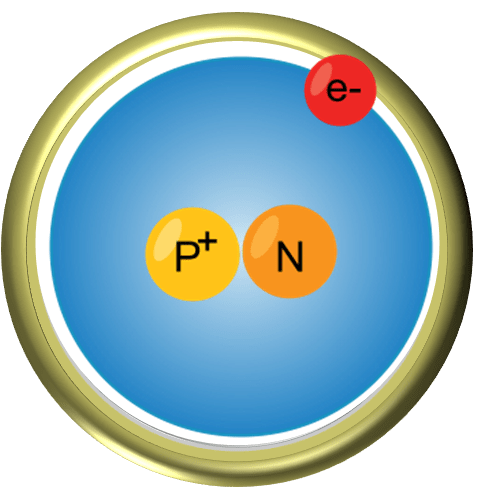
The Origin of Deuterium: Occurrence, Mining, Processing, and Production

Deuterium, also known as heavy hydrogen, is an isotope of hydrogen with a nucleus containing both a proton and a neutron. It was first discovered in the early 1930s by American chemist Harold Urey. Today, deuterium plays a crucial role in various scientific, industrial, and medical applications. In this article, we will explore the origin of deuterium, its occurrence in nature, its extraction and mining processes, commercial processing, and the countries that dominate its mining and production.
Deuterium occurrence in nature:
Deuterium occurs naturally in small quantities, accounting for approximately 0.0156% of all hydrogen atoms on Earth. Although deuterium is an isotope, it is not found as a pure element in nature. Rather, it exists as a component within various compounds, such as water (D2O), heavy water, and certain organic molecules. Heavy water, specifically, contains deuterium instead of ordinary hydrogen and is widely used in nuclear energy production, research reactors, and as a neutron moderator.
Extraction and Mining Processes:
As deuterium does not occur in substantial quantities in a free or pure form on Earth, it must be extracted from various sources that contain it. The most common method of extracting deuterium involves separating it from ordinary water, which contains a small percentage of heavy water. This is often achieved through a process known as electrolysis, where an electric current is passed through water to separate the hydrogen and oxygen atoms. The heavy water is then isolated and further purified to obtain deuterium.
Commercial Processing:
After extraction, deuterium undergoes commercial processing to ensure its purity and suitability for various applications. The purification process involves multiple distillation steps, fractional crystallization, and distillation under reduced pressure. These processes help separate other impurities and isotopes from deuterium, resulting in higher purity levels.
Countries and Environmental Impact:
Although deuterium is not mined in the traditional sense, it is extracted from various sources in several countries worldwide. Canada is known to have significant deuterium resources, particularly in its heavy water production facilities. However, the extraction of deuterium and heavy water does not have a notable impact on the environment since it is primarily obtained as a byproduct of water treatment processes.
Commercial Production:
While several countries extract deuterium, Russia is the largest producer of deuterium and heavy water. Russia’s dominance in deuterium production is due to its extensive water treatment facilities and the presence of natural sources containing heavy water. Other notable producers include Canada, the United States, China, India, and Australia. These countries either have significant demand for deuterium due to their nuclear energy programs or possess natural sources that warrant extraction and commercialization.
The impact of deuterium production on the environment may vary among countries. In Russia, where the largest production occurs, the environmental impact is relatively unknown, as limited information is available regarding the specific processes and technologies employed. However, it is crucial for these countries to ensure the proper handling, management, and disposal of waste byproducts, considering the potential long-term effects on ecosystems and water resources.
In conclusion, deuterium, an isotope of hydrogen, is a valuable resource used in numerous scientific, industrial, and medical applications. Although deuterium does not occur as a pure element in nature, it is extracted from various sources, primarily through the purification of heavy water. Russia is the largest producer of deuterium, followed by other countries with significant demand or natural sources. While the extraction and production of deuterium do not have a major environmental impact, it is essential for countries involved in its production to prioritize sustainable practices and minimize potential harm to the environment.
This article is brought to you by Sybrina Durant, the author of the middle grade picture book, Magical Elements of the Periodic Table Presented Alphabetically By The Elemental Dragons. Learn More. In that book Deuterium is presented by the dragon, Dusa.
Inter-Active Elemental Fantasy-Themed Periodic Table from Magical Elements of the Periodic Table Presented Alphabetically by The Elemental Dragon Clan
Click here to use This Inter-Active Viewer To Learn More About The Elements Each Elemental Represents On This Periodic Table. Want this in a 24″ x 36″ Poster? Click here.
Sybrina Publishing Offers Fun Activities Based On The Book
Magical Elements of the Periodic Table Magical Elementals
Browse Magical Elemental Activities at MagicalPTElements or Sybrina-Publishing on TPT or Classful
Want To Hear The No Metal No Magic Song?












